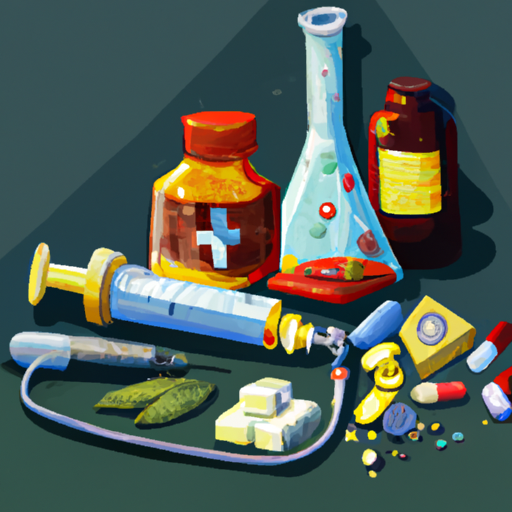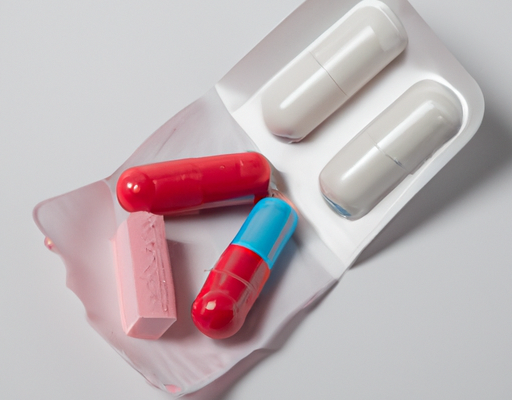Definition of Varicose Veins
Varicose veins are a medical condition where veins become abnormally enlarged, dilated and twisted. They are a common problem that affects up to 20% of adults. Varicose veins are most often seen on the legs, but can occur in other areas of the body too. Symptoms of varicose veins can include aching, swelling and a feeling of heaviness in the affected area. Other common signs are:
- Visible, twisted or bulging veins in the legs
- Itching and dry skin around the affected area
- Painful and swollen veins in the legs
- Restless legs at night
- Skin discoloration or ulceration
If left untreated, varicose veins can lead to complications such as skin ulcers, bleeding, infection and deep vein thrombosis. It is important to seek medical advice if you have any of these symptoms or are concerned about varicose veins. Treatment options depend on the severity of the condition and can range from lifestyle changes to surgical intervention.
Anatomy of Varicose Veins
The anatomy of varicose veins is such that the vein walls are unusually thickened, irregular and twisted. Blood pools in the vein, leading to pressure and swelling. The valves within the veins, responsible for directing the flow of blood, become weakened, allowing it to flow in the wrong direction and build up within the veins. Blood then begins to accumulate, the veins become larger and more visible, stretching the skin and causing pain, heaviness and aching in the lower legs. In more extreme cases, the skin can become swollen and discolored, with itchy patches and skin ulcers. In the worst cases, varicose veins can be life-threatening and require medical intervention.
Causes of Varicose Veins
Varicose veins are an excessive swelling of veins located just under the skin in the legs. The condition is caused by a malfunction of the valves located within the veins. These valves are responsible for controlling the blood flow in the legs, and if they become weak they are unable to prevent the blood from flowing oppositely, leading to swelling. Common risk factors for developing varicose veins are genetics, obesity, age, gender, hormones and occupations that require a lot of standing. When it comes to genetics, varicose veins may be more common in people with a family history of the condition. Obesity can put additional pressure on the vein walls and valves, which places a strain on the veins and make them susceptible to developing varicose veins. Age can also play a role, as the risk of developing varicose veins increases with age. Females may also be at higher risk, as hormone changes during pregnancy, puberty and menopause can affect veins. Occupations that require standing up for long periods may also cause blood to pool in the legs resulting in varicose veins.
Associated Symptoms of Varicose Veins
Varicose veins are a common medical condition where the veins in certain areas of the body become swollen and twisted. The most common areas affected are the legs, although they can also appear in other areas. While varicose veins are usually harmless, they can cause a range of associated symptoms. These can range from discomfort or aching in the affected area to the formation of open sores or ulcers on the skin. Symptoms may also include swelling in the feet and ankles, itching around the veins, and a feeling of heaviness in the legs. In more severe cases, varicose veins can increase the risk of blood clots, skin discoloration, and leg ulcers. If you experience any of these symptoms, it is important to speak to your doctor as soon as possible. Early treatment can help to reduce the risk of any long-term complications.
Diagnosis
The diagnosis of varicose veins is typically done in your doctor’s office. Your doctor will examine the affected areas and ask you to describe any discomfort you may be having. In some cases, they may also recommend additional tests to test the blood flow in your veins. Various imaging tests such as ultrasound, CT scans, and MRI can help to show more detail of your veins and the severity of your condition. Your doctor may also use special instruments to measure the amount of blood flowing through your veins, or perform blood tests to rule out any other underlying medical conditions. If veins are causing a skin ulcer or if blood tests are showing any signs of clotting, further diagnostic procedures such as venography and angiography may be required.
Treatment
Varicose veins are a common medical condition that affects many people. Despite the large numbers affected, treatment options exist to help reduce the severity of symptoms associated with varicose veins. Treatment options are divided into two categories: medical and surgical.
- Medical Treatment
- Surgical Treatment
Medical treatments are typically focused on improving the circulation of the veins and reducing the appearance of the vessels. This can be done through the use of compression stockings, lifestyle changes, or medications. Compression stockings provide compression to the legs and help improve circulation by increasing the pressure around the vessel. Lifestyle changes can include elevating the legs, avoiding standing or sitting for long periods of time, and exercising regularly. Medications may also be used to help improve the circulation and reduce the symptoms of varicose veins. Surgical treatments are designed to remove the veins or reduce their size, thus reducing their appearance and improving the circulation. This can be done through sclerotherapy, laser therapy, or vein stripping. Sclerotherapy uses injections of a foam solution to collapse the affected veins and force the blood to reroute through healthier veins. Laser therapy uses light energy to reduce the size of the vessels and improve the circulation. Vein stripping involves surgically removing the affected veins. Due to the potential risks associated with the surgical treatments, it is important to consult your doctor before proceeding with any medical treatment. By understanding the risks and benefits of each option, you can make an informed decision and make the best treatment choice for your individual situation.
Complications
Varicose veins can lead to a range of serious medical complications in the long term. These include skin ulcers, bleeding and infection. Skin ulcers may result from poor circulation in the legs, due to lack of blood flow to the area. This can lead to poor wound healing and poor skin health. There is also the risk of bleeding, if a vein is weak or damaged and can break open. Infection is also a risk when varicose veins are present, especially if the skin breaks down due to lack of circulation. If left untreated, these complications can be debilitating and even life threatening. It is therefore important to seek medical advice if you are concerned about the potential health implications of varicose veins.
Lifestyle Factors
Varicose veins can be caused by a range of factors, such as lifestyle, genetics and age. Specific lifestyle factors can play an important role in the formation of varicose veins. Poor diet, lack of exercise and prolonged standing can lead to an increased risk of varicose veins. Additionally, a patient’s clothing choices can have an impact on the development of varicose veins. Wearing tight garments that restrict circulation can cause veins to swell and interfere with the body’s natural blood flow. Those who suffer from obesity, or who regularly lift heavy objects, can also be at an increased risk. Taking steps to alleviate the risk factors associated with varicose veins, such as eating a balanced diet, exercising, and wearing supportive clothing, can help reduce the risk of developing varicose veins.
Prevention
Prevention of varicose veins from an early medical standpoint is vitally important. Healthy diet and lifestyle measures should be put in place, such as regular moderate exercise, avoiding excess alcohol and tobacco, and maintaining a consistent healthy weight. Losing weight in a slow and steady manner, instead of a crash diet, can be particularly helpful in deterring varicose veins. Elevating the legs whenever possible, and avoiding prolonged standing, can help to prevent further aggravation of the situation. In some cases, wearing compression stockings, in particular during standing activities, can also be beneficial in avoiding varicose veins. In extreme cases, your doctor may recommend vein closure procedures or laser treatments. Ultimately, if you stick to a healthy lifestyle regimen and listen to your doctor’s advice, you may be able to avoid varicose veins altogether.





No Comments